
Culture
18:33, 24-Dec-2017
A photo contest to salute traditional Chinese architecture
CGTN
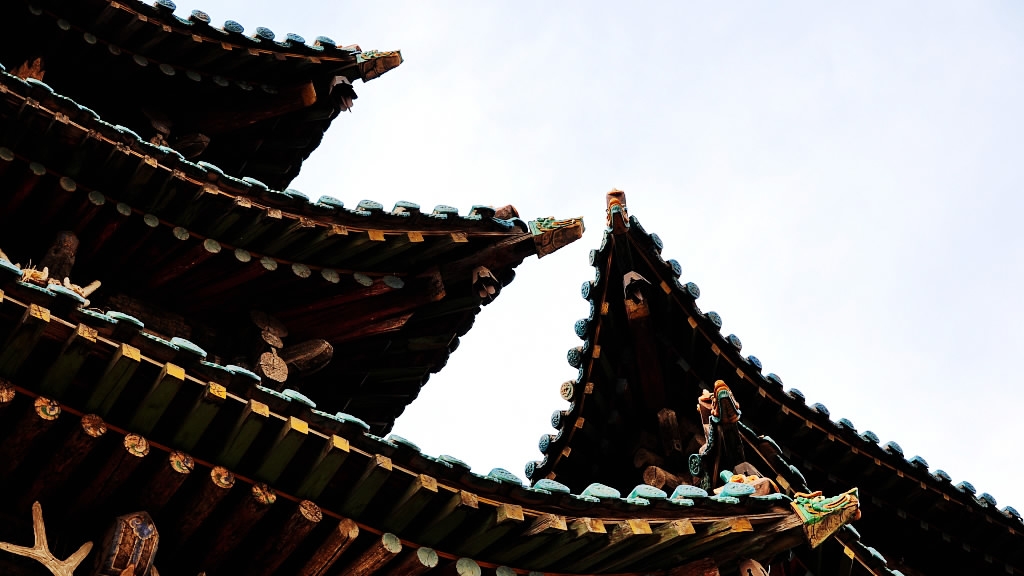
A photography competition looking for the best images of Shanxi's ancient architecture was launched on Friday to display the grandeur of traditional Chinese architecture – and remind the public that preservation efforts need to be made.
The event was organized by Shanxi Provincial Cultural Relics Bureau and Shanghai Museum, with cooperation of Shanxi Museum and Shanxi Institute of Ancient Building Protection.
The competition started on Friday and runs until late February next year, with the results revealed in early March.
According to the host’s introduction, Shanxi Province preserves over 30,000 ancient structures, the most in China, making it the best place to admire Chinese architecture.
A museum of traditional Chinese architecture
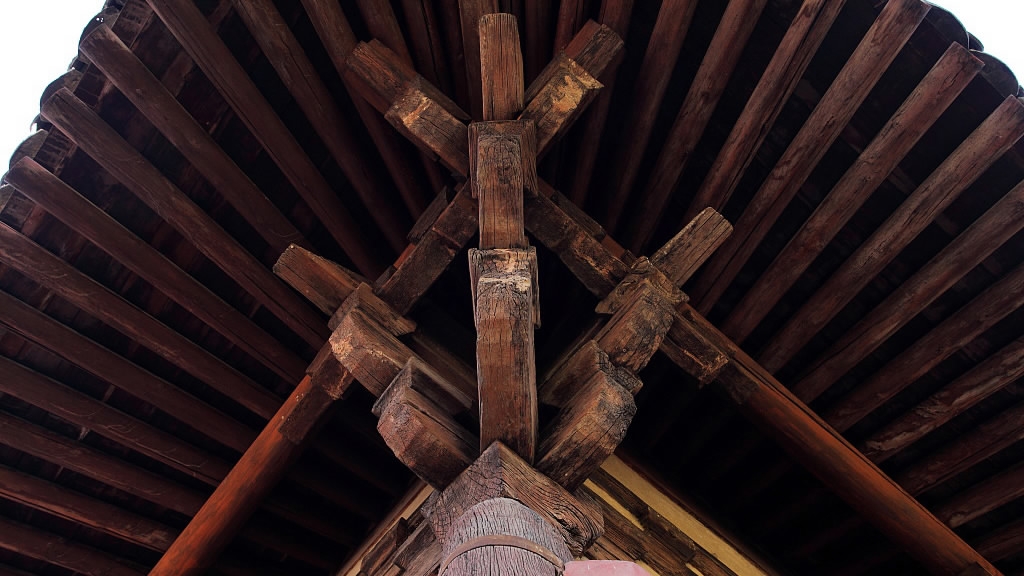
Dougong, a structural element of interlocking wooden brackets in traditional Chinese architecture / VCG Photo
Dougong, a structural element of interlocking wooden brackets in traditional Chinese architecture / VCG Photo
The oldest surviving wooden architecture in China is from the Tang Dynasty (618-907). There are only four remaining in the country, and they are all found in Shanxi Province.
The ancient art in Shanxi peaks with the Song, Liao, Jin and Yuan dynasties. The province possesses 120 wooden structures from those dynasties, accounting for 75% of the country's total.
Besides the wood, there are also stones and bricks involved in the structures.
Three illustrious forms of Shanxi architecture
Yungang Grottoes
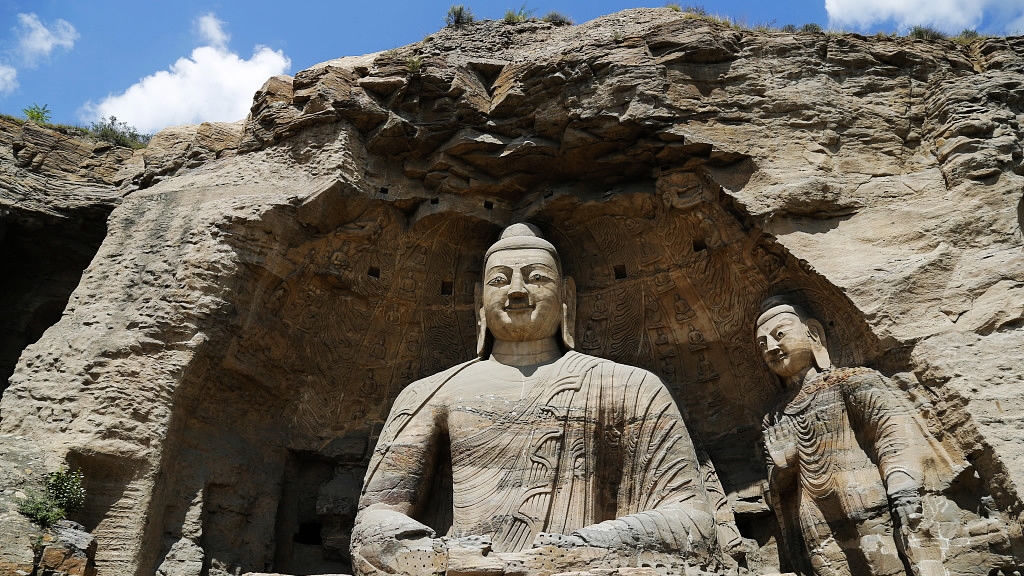
The giant statue of Buddha in Yungang Grottoes /VCG Photo
The giant statue of Buddha in Yungang Grottoes /VCG Photo
Yungang Grottoes in Datong, one of the four great grotto complexes in China, was excavated along Wuzhou Mountain clustering 53 caves and over 51,000 stone statues.
Construction of the grottoes started in 450 during the reign of Emperor Xiaowen, and they are relics of the Northern Wei Dynasty (386-534).
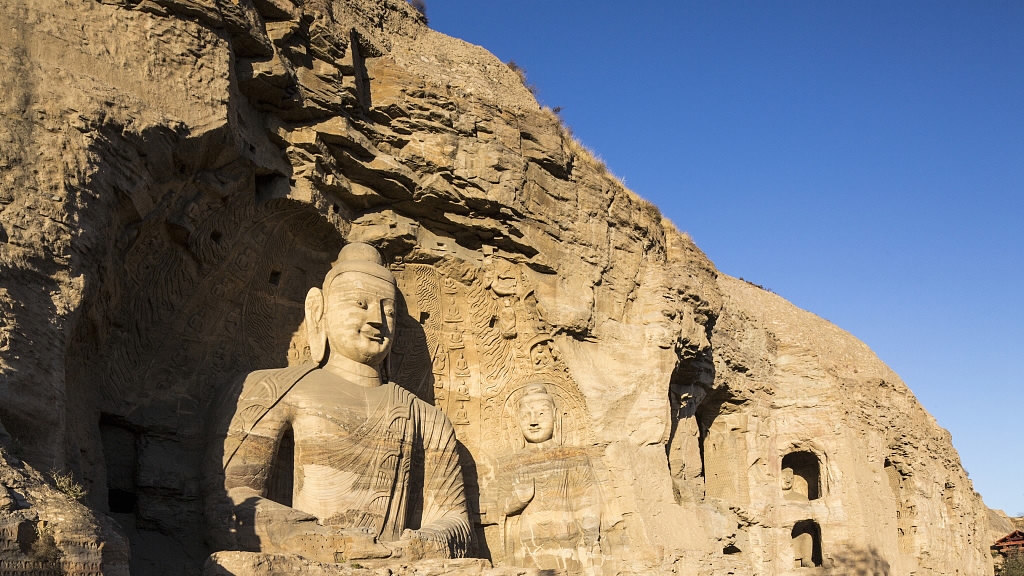
The giant statue of Buddha in Yungang Grottoes /VCG Photo
The giant statue of Buddha in Yungang Grottoes /VCG Photo
The largest cave is 20 meters high and showcases a 15-meter-high giant Buddha. These sculptures show the development of how traditional Chinese art was affected by society at that time due to its assimilation of Indian Buddhist art.
There are some 300 grottos in Shanxi Province currently most featuring Buddhism, with over 50 large caves built in the Northern Wei, Tang, Song, Yuan, Ming dynasties.
Wooden Pagoda in Yingxian County
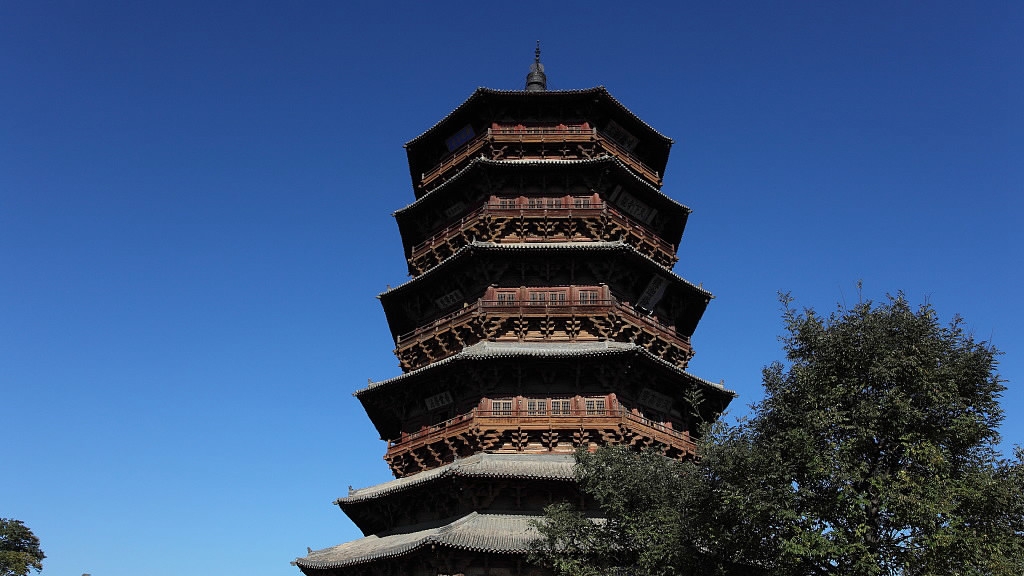
Wooden Pagoda in Yingxian County /VCG Photo
Wooden Pagoda in Yingxian County /VCG Photo
The Wooden Pagoda – located in Yingxian County of Datong – is the oldest and highest wooden structure in China.
Built in the Liao Dynasty (916-1125), it appears to be a five-story pagoda, some 67 meters high, but it has nine floors in total, with four hidden inside.
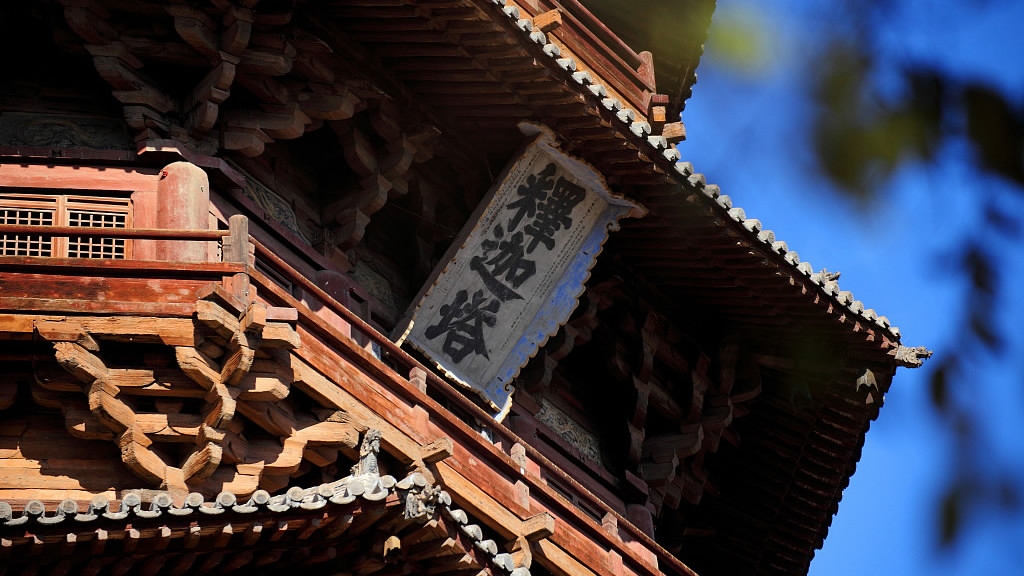
Wooden Pagoda in Yingxian County /VCG Photo
Wooden Pagoda in Yingxian County /VCG Photo
The pagoda was constructed using roughly 54 different types of bracket, and jointed with tenons and mortises instead of nails or rivets.
It has an exquisite quality that is rustic and simple, and has survived turbulent earthquakes and extreme weather conditions.
A gem in the architectural field, the pagoda has currently come under national cultural relics’ protection.
Suspending Temple
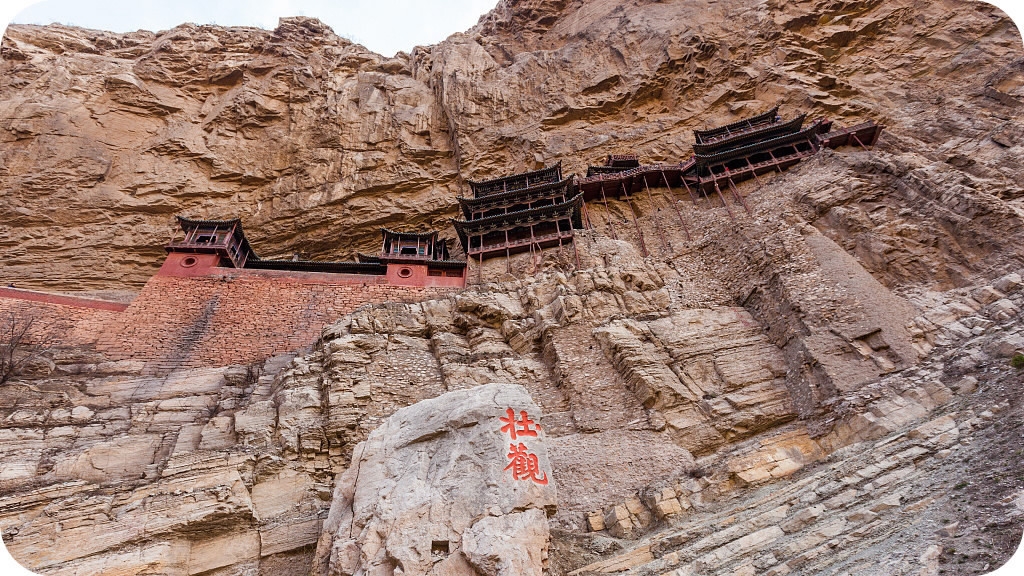
Suspending Temple /VCG Photo
Suspending Temple /VCG Photo
“Suspended” 75 meters above the ground, the temple was built into a cliff next to Mount Hengshan, Datong about 1,500 years ago, epitomizing of traditional Chinese religions – Buddhism, Taoism and Confucianism.
The 40-room temple is connected by corridors, bridges and walkways which defy gravity due to the use of oak crossbeams. They are plugged into holes chiseled into the cliff-side and support the construction.
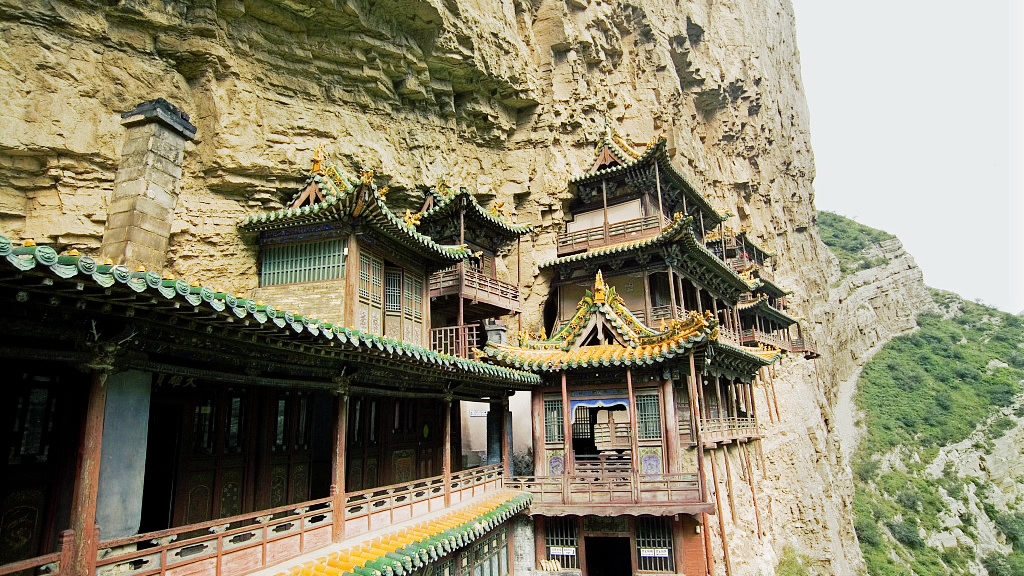
Suspending Temple /VCG Photo
Suspending Temple /VCG Photo
The temple's bronze, iron and clay statues – of which there are over 80 – tell the span of the dynasties. The architecture evokes an otherworldly feeling in Buddhists, Taoists – and even tourists.

SITEMAP
Copyright © 2018 CGTN. Beijing ICP prepared NO.16065310-3
Copyright © 2018 CGTN. Beijing ICP prepared NO.16065310-3